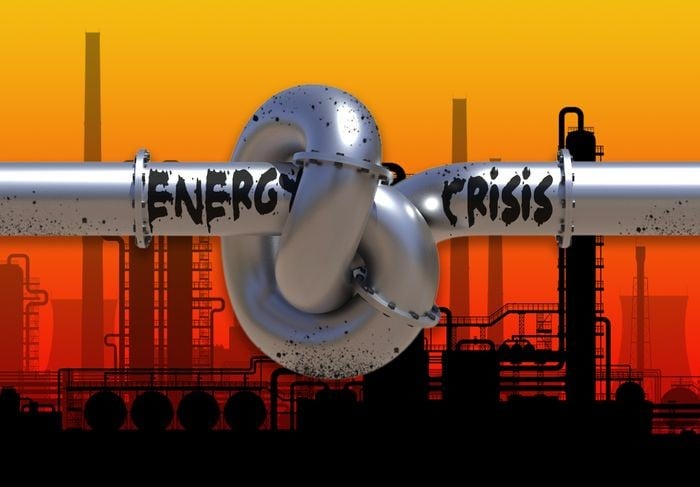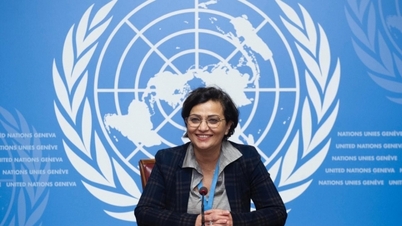 |
| If the Middle East conflict continues to escalate, it is predicted that it could directly affect the world energy market. (Source: MarketWatch) |
Hamas attacks in Israel over the weekend have plunged the entire region into a new era of extreme instability, both politically and .
Energy market analysts are closely watching developments in the conflict that could impact global oil prices, which have been on a dramatic trajectory since 2020 due to the Covid-19 pandemic and the war in Ukraine.
In the immediate aftermath of the attack, crude oil prices rose nearly 5%, reaching $89 a barrel on October 9. Uncertainty around potential supplies caused the spike, but prices have since stabilized.
“If the conflict spreads and causes oil prices to rise, this will have a profound impact on the economy ,” Gita Gopinath, a senior official at the International Monetary Fund (IMF), told Bloomberg .
US President Joe Biden also expressed concern that the conflict could develop and spread.
Against the flow of history
Looking back, the most dramatic oil crisis of the 20th century also occurred after the outbreak of conflict in the Middle East. The 1973 Yom Kippur War saw several Arab countries attack Israel. The region's largest oil producers, led by Saudi Arabia, imposed an oil embargo on pro-Israel countries such as the United States, United Kingdom, Canada, Japan and the Netherlands, leading to a global oil crisis that caused oil prices to rise by more than 300%.
The second major oil crisis occurred in 1979 following the Islamic Revolution in Iran. The country's subsequent oil production decline saw global oil supplies fall by about 4%, with the price of a barrel of crude more than doubling.
So far, there is little sign that what happened in Israel will trigger similar crises. Prices are now well below the $97 a barrel they hit in late September. Suggestions that prices would soon top $100 a barrel now look misguided.
 |
| The global oil price crisis spread in 1973, after a regional conflict in the Middle East broke out. (Source: AP) |
“Both WTI and Brent crude fell on Friday as concerns about sudden and unexpected supply disruptions were brushed aside,” Tamas Varga, an analyst at oil trading firm PVM Oil Associates, told Reuters on Friday.
Currently, both Brent and WTI crude are the two most traded crudes in the world. Brent crude is the benchmark for crude oil in Africa, Europe and the Middle East while WTI is the benchmark for North America.
“The upward pressure on prices is largely due to ‘concerns’ about serious supply disruptions. So far, no such scenario has materialized,” Carole Nakhle, CEO of energy consultancy Crystol Energy, told DW .
However, the market remains concerned about the risk of the conflict worsening and spreading. Magid Shenouda, deputy CEO of Swiss commodities trading company Mercuria, said prices could exceed $100 a barrel if tensions continue to escalate.
Israel's strategic role
Although Israel is not a major oil producer like the Arab countries, it plays a major role in the global gas industry. Following Hamas attacks, it shut down the Tamar natural gas field, about 25 kilometers off the southern coast.
Israel exports a large amount of gas to its neighbors Egypt and Jordan. The closure has raised concerns that the global gas market will become even tighter than it has been recently.
 |
| Although not a major oil producer like the Arab countries, Israel plays an important role in the global gas industry. (Source: Getty) |
Egypt uses Israeli gas for some of its liquefied natural gas (LNG) exports and the shutdown at Tamar could affect Egypt's LNG exports to Europe and elsewhere.
However, Israel’s largest gas field, Leviathan, continues to operate normally. The uncertainty is how long the Tamar field will remain shut down. Experts say a prolonged shutdown would significantly impact Israel’s exports to Egypt and Jordan, with knock-on effects for the global LNG market given Egypt’s role as an LNG exporter and the potential for imports from elsewhere to Jordan.
The Iran factor
The crisis in Israel comes at a time when global energy markets are already strained, due to unrest caused by the conflict in Ukraine, the fallout from the pandemic and other factors.
Oil prices have fallen from a peak of $115 a barrel in June 2022, despite production cuts from Saudi Arabia and its allies in the Organization of the Petroleum Exporting Countries (OPEC).
On October 4, days before the attack in Israel, OPEC confirmed that it would maintain its production cuts until the end of 2023. The cuts by Saudi Arabia, other OPEC members and Russia mean that the world has significant spare capacity in case of unexpected oil supply cuts. However, it remains uncertain how Riyadh will respond to recent tensions with the United States.
And now, the role of the Iranian factor is being closely watched by all parties. Despite sanctions, Iranian oil has recently been flowing heavily to China and many other places, helping to "calm" the oil market after restrictions on Russian oil.
However, if the Islamic nation becomes actively involved in a conflict with Israel, pressure will mount on the US and other countries to step up enforcement of sanctions on Iranian oil.
There is also speculation that gas-rich countries such as Qatar could stop exports in protest at Israel's military action.
“The Qatar story is still just a rumor. Of course, exporting natural gas gives a country like Qatar significant political leverage, but the small emirate also knows how damaging deliberate cuts in supplies can be to its reputation as a reliable supplier, something Qatar has worked hard to protect,” commented Carole Nakhle.
Analysts say that although the crisis has not yet spread to the global energy market, the risk of escalation has made the market vigilant.
Source



![[Photo] Prime Minister Pham Minh Chinh attends the 80th anniversary of the founding of Voice of Vietnam Radio Station](https://vphoto.vietnam.vn/thumb/1200x675/vietnam/resource/IMAGE/2025/9/7/abdcaa3d5d7f471abbe3ab22e5a35ec9)


![[Photo] General Secretary To Lam attends the 55th anniversary of the first television program broadcast](https://vphoto.vietnam.vn/thumb/1200x675/vietnam/resource/IMAGE/2025/9/7/8b8bd4844b84459db41f6192ceb6dfdd)






















































![[COMING UP] Workshop: Resolving concerns for Business Households about eliminating lump-sum tax](https://vphoto.vietnam.vn/thumb/402x226/vietnam/resource/IMAGE/2025/9/7/5627bb2d0c3349f2bf26accd8ca6dbc2)











































Comment (0)